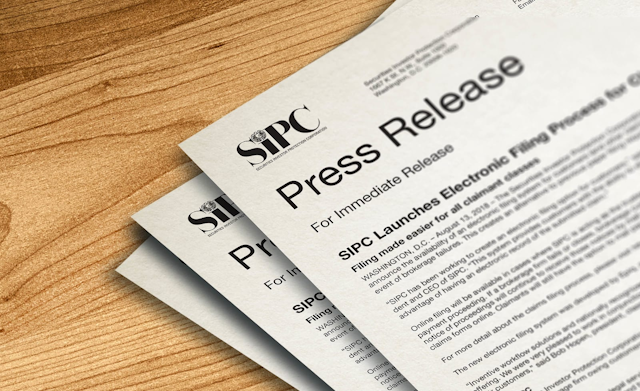Approximately 46-50 Percent of Allowed Claims Would Be Fully Satisfied
Required Reserves for Appeals, Pending Claims and Time-Based Damages
Will Determine Final Distribution Amount
NEW YORK, NEW YORK - July 26, 2012– Irving H. Picard, the SIPA Trustee for the liquidation of Bernard L. Madoff Investment Securities LLC (“BLMIS”) filed a motion today in the United States Bankruptcy Court for the Southern District of New York seeking approval for an allocation of recovered monies to the BLMIS Customer Fund and for a second pro rata interim distribution – of a minimum of approximately $1.5 billion and up to approximately $2.4 billion – from the Customer Fund to BLMIS customers with allowed claims. The second interim distribution, when combined with the funds already returned to BLMIS customers would – at a minimum – satisfy approximately 46 percent of the current allowed claims in the BLMIS liquidation and could satisfy up to approximately 50 percent of the current allowed claims.
On June 25, 2012, the United States Supreme Court declined to review the net equity calculation formula in the Madoff liquidation, thus making funds held in reserve for net equity available for distribution. In addition, on July 16, 2012, the deadline for further appeals of the approximately $7.2 billion Picower forfeiture to the United States Government expired, making the forfeiture order final. This released the $5 billion Picower settlement funds to the SIPA Trustee, a portion of which will be included in this distribution.
“This distribution motion is another major milestone in the worldwide Madoff recovery effort,” said Mr. Picard. “The denial of certiorari by the Supreme Court and the release of the Picower settlement funds are great news for BLMIS customers and we will move quickly to make the distribution.”
The motion requests approval from the Bankruptcy Court to allocate approximately $5.5 billion to the Customer Fund from which the distribution will be made. A large portion of the allocated funds must be held in reserve pending the resolution of objections seeking inflation or interest adjustments to claim amounts, as well as appeals to other settlements. Additional funds must also be held in reserve in the Customer Fund pending the outcome of litigation involving 237 claims that may become allowed once those litigations are resolved.
“Distributing more money to customers with allowed claims brings us closer to our goal. However, we continue to grapple with issues, mostly objections, that seek to redirect funds that could be going to approved claimants now,” said David J. Sheehan, Chief Counsel to the SIPA Trustee. “An objection that in particular affects the amount of the second interim distribution is the question of whether claimants are entitled to ‘time-based damages,’ which are payments based on the time elapsed while customer monies were deposited with BLMIS. This is the reason why a significant portion of the Customer Fund cannot be distributed at this time.”
More than 1,240 objections have been filed relating to the time-based damages issue. The objections relate to additional payments based on an existing New York state statutory rate of 9 percent, inflation, or other damages calculations.
“These arguments are specious at best,” said Mr. Sheehan. “The Securities Investor Protection Act (SIPA) does not provide for interest or inflationary adjustments and no basis in common law exists either. In addition, time-based damages run afoul of the court rulings on net equity, because those payments would come at the expense of ‘net losers,’ who have not yet recouped their initial BLMIS principal investment.”
Mr. Sheehan noted that even though there is no basis for such damages, until the issue is resolved by the court and there is a final, nonappealable order on which to proceed, the SIPA Trustee must nevertheless establish a reserve.
“If the objections were withdrawn, the SIPA Trustee would not be required to maintain any reserve for this issue, and he could distribute more than $3 billion, or approximately 42 percent of each allowed claim amount, unless the claim is fully satisfied,” said Mr. Sheehan. “By contrast, if we must maintain the maximum reserve reflecting a 9 percent interest rate for time-based damages, which is the highest rate that objecting claimants have asserted they are entitled to, the SIPA Trustee is only able to distribute approximately $1.5 billion, or approximately 20.5 percent of each allowed claim amount, unless the claim is fully satisfied. For customers with allowed claims who have waited patiently for more than three years to receive some recovery of their stolen principal, the difference between the two distribution percentages is clearly substantial.”
Mr. Sheehan said that the SIPA Trustee, recognizing that a 9 percent interest rate is unrealistic in the current economic environment and would not likely be approved by any court, is seeking approval from the Bankruptcy Court for a reserve based on a 3 percent interest rate, which reflects a more reasonable basis for the reserve on the time-based damages issue. If objections to the 3 percent reserve are filed by third parties and cannot be resolved prior to the entry of an allocation and distribution order, the SIPA Trustee may opt to seek approval for an order to use a 9 percent reserve.
Under the 3 percent reserve scenario, 1,229 BLMIS accounts will receive a distribution of approximately $2.5 billion or approximately 33.5 percent of their allowed claim amount, unless the claim is fully satisfied. The average payment would be nearly $2 million. Of these accounts, 181 will become fully satisfied, bringing the total of fully satisfied account holders to 1,067 (1,048 accounts will remain partially satisfied and will be entitled to participate in future interim distributions).
Under the 9 percent reserve scenario, the 1,229 accounts will receive a distribution of approximately $1.5 billion or approximately 20.5 percent of their allowed claim amount, unless the claim is fully satisfied. The average payment would be more than $1.2 million. Of these accounts, 100 will become fully satisfied, bringing the total of fully satisfied account holders to 986 (1,129 accounts will remain partially satisfied and will be entitled to participate in future interim distributions).
Additional interim distributions are conditioned upon the resolution of other settlement appeals including a $1.025 billion Tremont settlement and a $220 million settlement with the Norman F. Levy family. In addition, the IRS settlement requires a $103 million settlement reserve.
Mr. Sheehan also noted that there are 237 claims that are still subject to litigation. Once the related litigation is resolved, these claims may become allowed and would become eligible for all pro rata distributions to date. The SIPA Trustee must set aside sufficient funds for this scenario; thus the related pool of monies being held in reserve in the Customer Fund is currently approximately $3.036 billion under a 9 percent time-based damages scenario and approximately $1.861 billion under a 3 percent time-based damages scenario.
The SIPA Trustee has recovered or reached agreements to recover more than $9.1 billion, equivalent to approximately $7 million a day for BLMIS customers since his appointment in December 2008. These recoveries exceed prior recovery efforts related to all other Ponzi schemes, in terms of dollar value and percentage of stolen funds recovered.
To date, the SIPA Trustee in the BLMIS liquidation has distributed more than $1.1 billion to Bernard Madoff’s victims. The first interim pro rata distribution of approximately $335.5 million in recovered monies from the BLMIS Customer Fund to BLMIS customers – on allowed claims relating to 1,243 accounts, or about 4.6 percent of each allowed claim amount, unless the claim has been fully satisfied – commenced on October 5, 2011. In addition, the SIPA Trustee has paid approximately $802.3 million in advances from SIPC to BLMIS customers with allowed claims.
“Additional, significant interim distributions are still ahead for the victims of the Madoff fraud,” said Mr. Picard. “We anticipate recovering more stolen assets through litigation and settlements. Final resolution of disputes will permit us to reduce reserve amounts and distribute those funds to customers in the future. As these uncertainties are resolved, we will seek authorization for further allocations and distributions as quickly as possible.”
Information on overall recoveries to date, each settlement, the appeal status of a particular settlement and many other issues can be found on the SIPA Trustee’s website: www.madofftrustee.com.
A copy of the Customer Fund Allocation and Distribution Motion is available on the SIPA Trustee's website at http://www.madofftrustee.com as well as on the United States Bankruptcy Court’s website at http://www.nysb.uscourts.gov/; docket number Bankr. S.D.N.Y., No. 08-01789 (BRL).
A hearing on the motion has been set for August 22, 2012.
In addition to Mr. Sheehan, other Baker Hostetler attorneys who worked on the distribution and related filings include: Seanna Brown, Jorian Rose, Jacqlyn Rovine, Thomas Wearsch, Bik Cheema and Brian Bash.
































